My small family succeeded in breaching the psychological barrier constraining movement beyond the city of Melbourne. We traveled east with Emely McCord to a region near Bairnsdale and a house of mud brick and galvanised iron occupied by her mother Tosie and her younger brother Kyowa.
Inevitably, when Tosie sees Kyowa playing with Polly, she smiles dreamily and says, “They will grow up to be lovers”. Her tone… sounding not like a prediction… but a natural truth…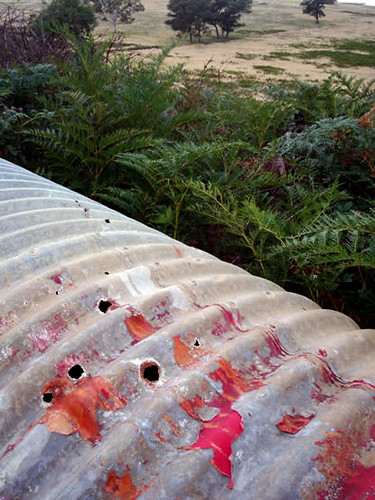
In recent years, the Rainbow Lorikeet has become common in my zone and I am continually surprised by the beauty of its plumage. But I had forgotten that the Eastern Rosella can be equally as striking - and there were plenty of these at Tosie’s, perched along the barbed wire fences, coats plumped up in the cold. They are tremendously beautiful birds.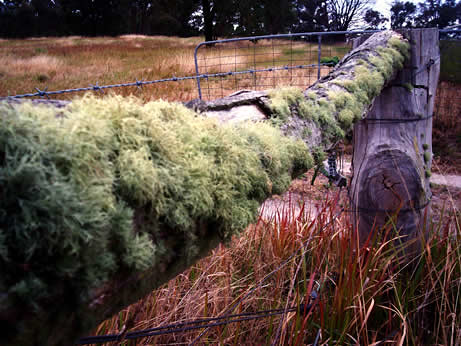
Also, there were Welcome Swallows, darting and weaving over the bracken and the long dry grass, snatching up insects on the wing. Such is the manner of its flight, it is almost impossible to get a decent look before the bird spirals, dives or immelmanns in precisely the least expected direction. They flutter more than fly, like supercharged butterflies.
[If it isn’t obvious by now, I’m engaged in a bird obsession. I can tell you that in the wetlands adjoining the Grey Creek there are Purple Swamphens, Eurasian Coots, Pacific Black Ducks, Chestnut Teals and Dusky Moorhens. In the habitat at the end of the street I’ve seen Australian Wood Ducks, Laughing Kookaburras and Crested Pigeons. In our yard, somewhere high in a huge peppermint gum, there is a Tawny Frogmouth and in a park not two kilometres distant, so it is said, there resides a Powerful Owl.]
Walking through the fields surrounding Tosie’s property, we encountered the deep workings of dour wombats, the skeleton of a cow and the freshly dismembered carcass of a wallaby; [on the end of one bloody, discarded leg, there was a talon worthy of a velociraptor].
By a remote near-empty dam, we discovered two turtle shells, not far from each other. Each was about six inches in length. Desiccated leather curled away to reveal sutured white bone. Little white stumps extruded where the legs and head had been. Naturally, we brought them back home.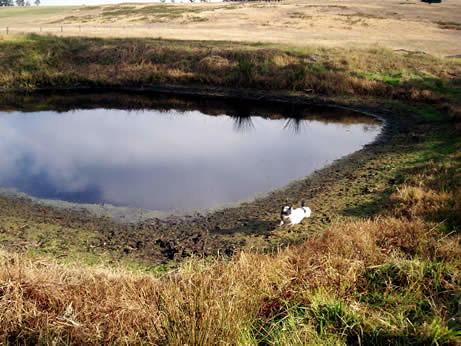
“Oh, you found those guys,” was Tosie’s reaction.
It transpired that the turtles had a history.
Emely had been first to discover them, shortly after their demise. Tosie had passed by their remains more recently.
Now, the important thing about Tosie is her deep affinity with Nature. She is in league with it, coiled within it, witness to its cryptic secrets. When she speaks, she sometimes sounds like a flaked out hippy, but her understanding of the bush and its underlying principles is profound. One would be foolish to discount her opinions on the subject.
I asked if the turtles - akin to some testudinal Burke & Wills - had almost made it to the dam, only to perish on the brink. Or had they died shortly after departure?
Drought in the region, Tosie explained, had caused the few remaining bodies of water to become overcrowded. With turtles. Conditions in the dam would have been very poor. Few resources. High levels of disease, toxicity. Our two ill-fated specimens would have been asked to leave by the others. To find somewhere else, or die. To sacrifice themselves for the survival of the community.
“Do turtles mate for life?” asked my wife, characteristically.
“I don’t know,” answered Tosie.
“What language did the turtles use?” I asked.
“The language of the forest,” answered Tosie.
Immediately, I thought of M. Night Shyamalan’s The Happening. And of The Swarm by Frank Schätzing.
I accept that it is within the realm of possibility for the forest to have a language, and certainly I would like it to have one …
Subtle chemical signals in the currents of the air, passed from leaf to caterpillar, from wombat bolus to dung beetle and thence to the blind nuzzling head of the earthworm …from gnarled parrot beak to witchetty grub … from pollen cloud to the tarsal combs of the bee … from diatom to rotifer to amoeba … from water-skimming spider to - at last - the murky consciousness of the turtles.
“Honourable citizen of the terrestrial biome. It has fallen to you [and your husband] to make the ultimate sacrifice.”
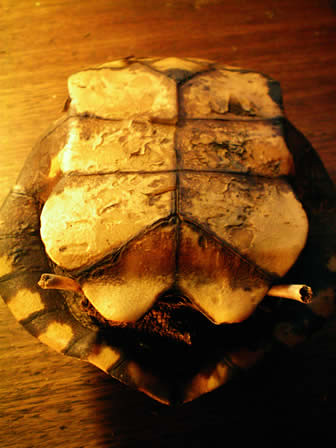
A signal, a demand, an imperative to which all creatures submit, which every organism, sentient or not, may interpret. To actually term it a language may be a superposition of our own thought patterns over something very different. Anthropomorphism may be the applicable word. Perhaps, the turtles were subject to something more simply described as the law of nature, red in tooth and claw.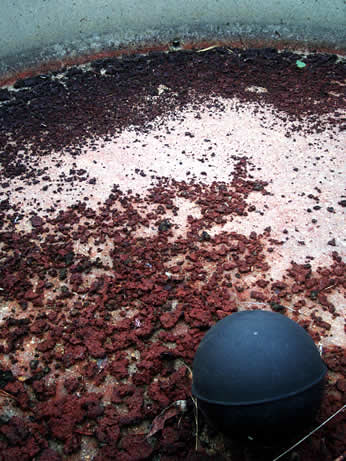
The following week, Polly took one of the turtle shells to school for show-and-tell. Doing her best to explain ‘the language of the forest’, my wife penned a short explanatory note for Mrs Hobson to read aloud. I sealed the shell in plastic, predicting a possible violation of Education Department hygiene strictures. Indeed, it was redolent with ongoing decay and I didn’t want to unnecessarily put the children off turtles. Perhaps forever …
ps: Tessie, the little dog in the picture of the dam, was run over and killed a week after we left. She had gotten herself under the wheels of Tosie's car as it backed out the driveway. Tessie was one of the sweetest dogs I think I've ever met.












5 comments:
Great story Sam.
I will no longer be able to wander the bush without imagining the language of nature all around me.
Any feedback from the show and tell session?
Until I moved far west, I had no idea how ornithologically-deprived city-dwellers are.
I know Surrey Hills has parkland Rainbow Lorikeets, and golf courses harbour the occasional parrot and cockatoo, but
The country skies are jam-packed with wonderful birds.
Flocks of crazy kookaburras in a contagious cackling contest, blue fairy wrens travelling about in family groups, a pait of falcons where I am at the moment.
King Parrots are very large and very tame and bold too - they ate seed from my hand on a Mt.Dandenong balcony.
Unfortunately, I couldn't get much sense out of Polly regarding her turtle demonstration. I must ask Mrs Hobson.
Once you start looking, there really are quite few birds in the city. It amazes me. I saw some more wood ducks yesterday, and a white faced heron. Also, I spied an Eastern Rosella amongst a flock of minor birds.
Sydney's had a healthy rainbow lorikeet population ever since bushfires devastated much of Kuringai National Park & surrounds back in January 1994. I love them to bits. I love the way they sway around the wattles and grevilleas, poking their beaks into the pods of home-grown nectar. And their colours of course, miraculous!
I believe humans intrinsically know this language of nature too that you speak of, but in the build up of the world & its structures we see around us, we've wantonally abandoned it of course. Perhaps the collapse of the earth's eco & climate systems are indicative mankind's folly for walking from his/her origins - the natural life around us - of which we're not separate from, we only try hard to be.
Very good ideas, great stuff.
ross b
Ross B, I'm with you. We are a part of nature, after all, however hard we work to make it otherwise. Melbourne too is flooded with sublime rainbow lorikeets - people say the drought has forced them in.
Post a Comment